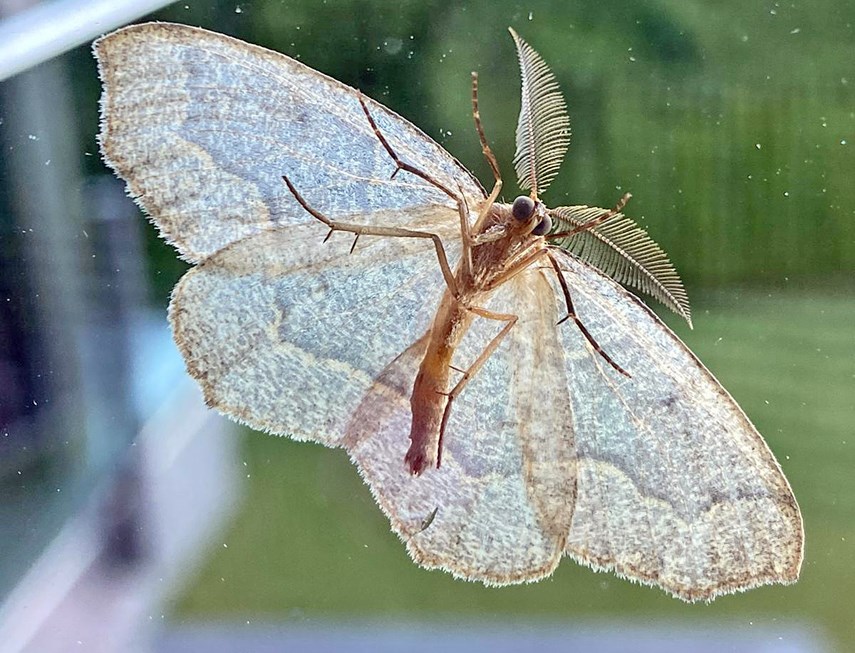Whether you view them as a sign of looming apocalypse or a welcome distraction from current events, either way you’ve surely noticed that Metro Vancouver is overrun with moths right now.
A reader from West Vancouver recently sent in her awesome close-up snapshot – taken with her smartphone – of a Western hemlock looper moth.
The photo is of one of “the thousands of moths currently covering our home,” the reader stated in an email. “It displays quite the headdress.”
Western hemlock looper moth are common in British Columbia and are known to defoliate trees, especially hemlocks, Douglas firs, and red cedars.
Outbreaks occur every 11 to 15 years when environmental factors cause their populations to spike.
The North Shore News recently reported on the moth outbreak after people noticed that many trees on North Shore mountains and watersheds such as the Capilano Reservoir were turning orange due to the insects that, after hatching as larvae or caterpillars, munch on the trees’ needles before turning into moths.
Not every tree that is turning orange will die though, according to a provincial forest entomologist who was interviewed.
The current outbreak of Western hemlock looper moths began two years ago.
The District of North Vancouver has added an information page to its website with FAQs and is asking residents to have patience while the outbreak completes its natural cycle. There's also an online tool that district residents can use to report if trees on their property appear to have died and become hazardous.
– with files from Brent Richter



